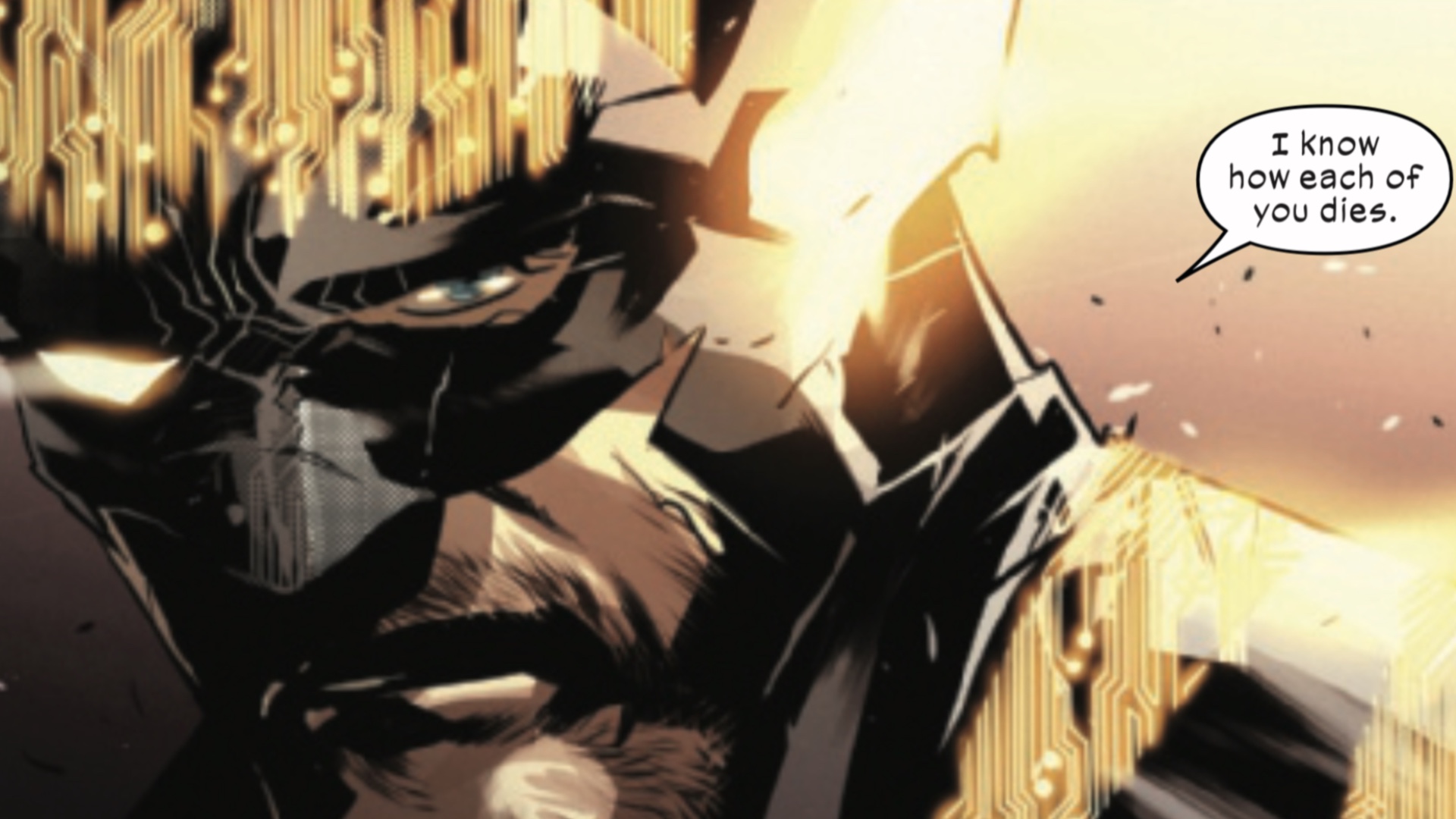Writer: Benjamin Percy
Artists: Joshua Cassara and Federico Vincentini
Marvel Comics, February 2022
The superhero character Wolverine, created 1974 by Roy Thomas, Len Wein, and John Romita Jr and owned by Marvel Comics, is a never-ending rolling vista of commercialisation, devoid of navigation. The prospect of the world-famous Canadian mutant being infected with a virus caused by an alien machine organism called the Phalanx, promised by the covers to these two comics, was on the face of it an interesting proposition. And the art, by Joshua Cassara and Federico Vincentini, is strikingly appealing.

Sadly, however, we have a plot composed of a time-travelling Wolverine meeting his son, his clone, and his clone’s clone in a visit to his past and our contemporary time, and otherwise engaging in mindless brawls with a complete absence of charm or finesse. This Wolverine is stone-cold.

And because this is Marvel Comics, the story is split across two titles – X Lives of Wolverine and X Deaths of Wolverine. Does a zig-zag of nomenclature – two titles when one would do – really increase sales?
When fictional master detective Sherlock Holmes was killed off by Sir Arthur Conan Doyle in 1927, the publisher of the stories nearly went bankrupt as the readership ended left in droves. This cautionary tale must haunt the owners of popular franchises.
But, for characters like Wolverine (and DC Comics’ Batman), it is fair to say that the topography is completely mapped. Wolverine has died, been brought back to life, almost married, killed his son (now reincarnated), cloned, brainwashed, brain damaged, crucified, put into a wheel chair, fought Nazis, killed a time-travelling version of himself, been trained as a ninja, tried to decapitate himself by laying his head on a rail line, been burned up upon orbital re-entry into an alien atmosphere, had the unbreakable metal encasing his bones drained out, masqueraded as a bouncer in a South East Asian island, been given the powers of God, and, most recently, moved into a house on the Moon where he has entered into a romance with his long term male rival and his girlfriend.
There’s no territory left to find. Every stone has been over-turned. English explorer Harry Philby crossed the Empty Quarter, a barren ocean of sand in Saudi Arabia, and wrote to his wife: “I have sworn a great oath not to go home until I have crossed the Empty Quarter twice! And left nothing in it for future travellers.” It is as if every editor and writer of Wolverine’s adventures seeks something new in the endless sands. Yet there is nothing left. We know it all.
In this storyline, Wolverine is bereft of the inner monologue first established by Frank Miller (for Batman) which substitutes for word balloons, and instead is a machine-driven killer from the future, who walks harmlessly and wordlessly through fire, attacking cops. Sound familiar to the audience of the Terminator motion pictures? And even then, we have seen this before, back in 1992:

Wolverine is snapped out of his zombie-state in an encounter with his family, and immediately lapses into pathos. It is terrible writing.

The only saving grace to this particular title is Moira MacTaggart, sometimes-romantic partner to the X-Men’s founder Professor Xavier, on the run from the shape-changing assassin, Mystique. MacTaggart has a special role to play in this story. By reason of her many lives in many universes (see our review https://worldcomicbookreview.com/2019/10/02/powers-of-x-1-3-and-house-of-x-1-4-review-a-tale-of-civilisational-evolution/ ), she knows the future of humanity is grim, and has repeatedly identified the key triggers – the creation of the human alliance called Orchis, Orchis’ construction of the lethal artificial intelligence called Nimrod, and other milestones in the demise of both humanity and mutantkind. Now, she is on the run from the X-Men because she is revealed unexpectedly as a traitor to the mutant cause. Faced with repeated failures throughout time, it is little wonder she eventually gave up and sided with the winners. Heroes becoming turncoats is something we do not see in comic books very often at all.
Yet even she has a role to play in the Terminator pastiche: like Sarah Connor, armed with a sniper rifle and muttering about how she has seen the grim future, MacTaggart has been turned into a laughably familiar cliche. Not the best of outings for writer Benjamin Percy.

